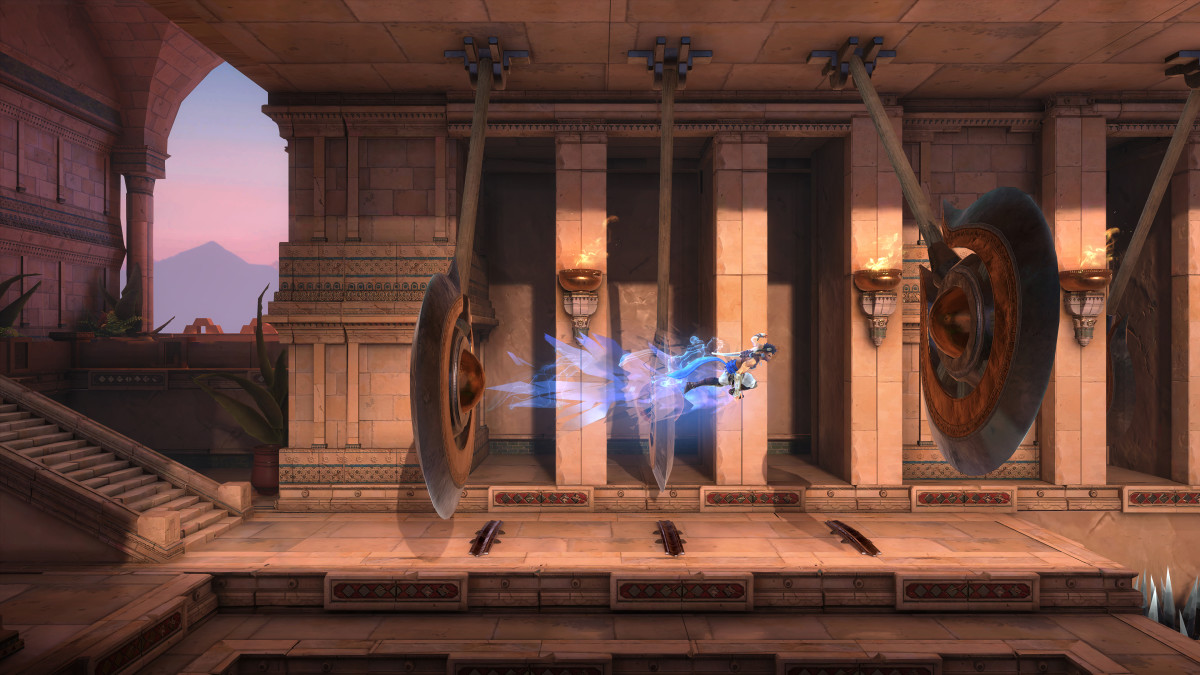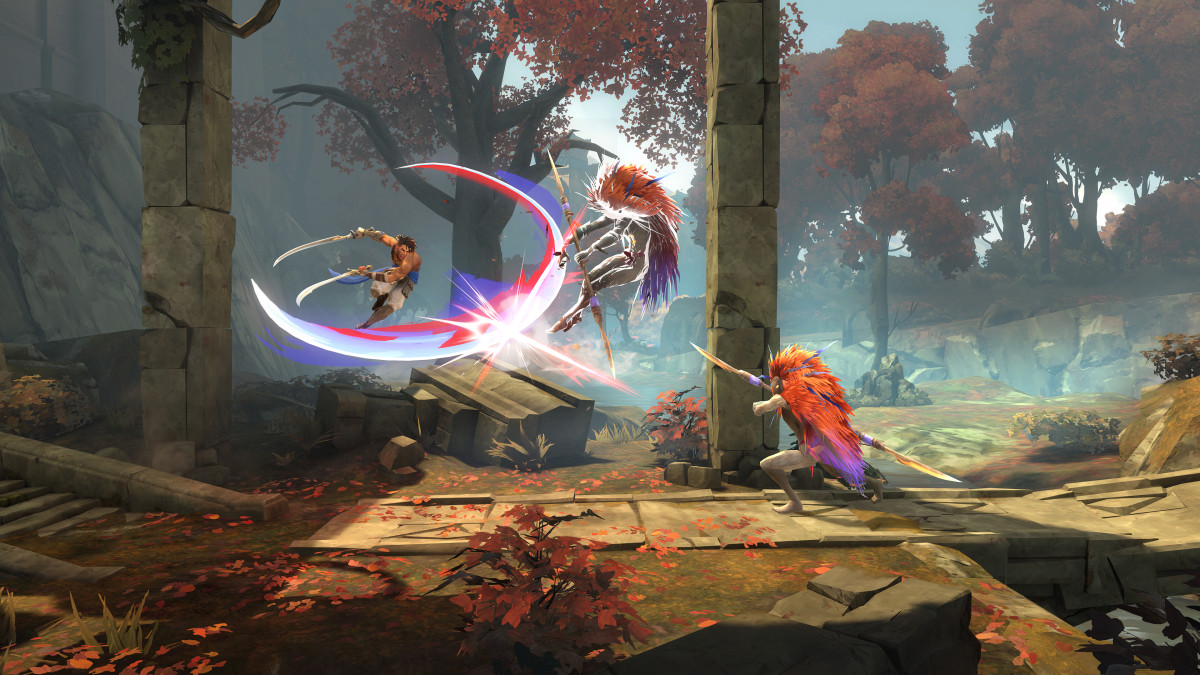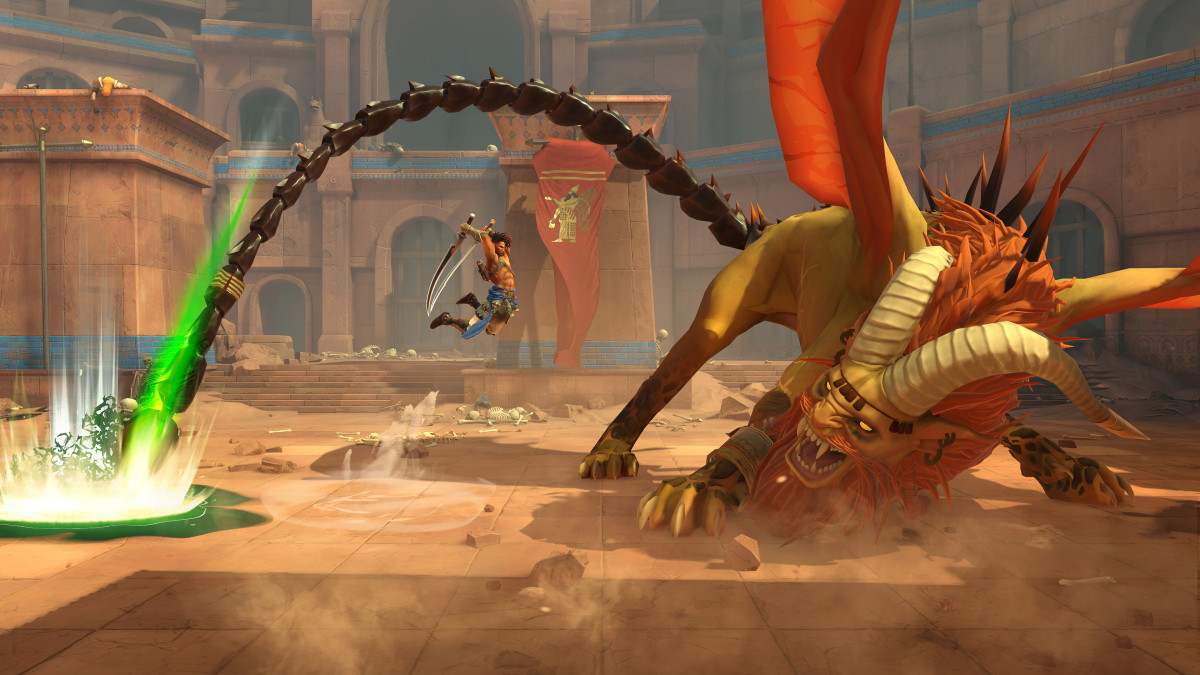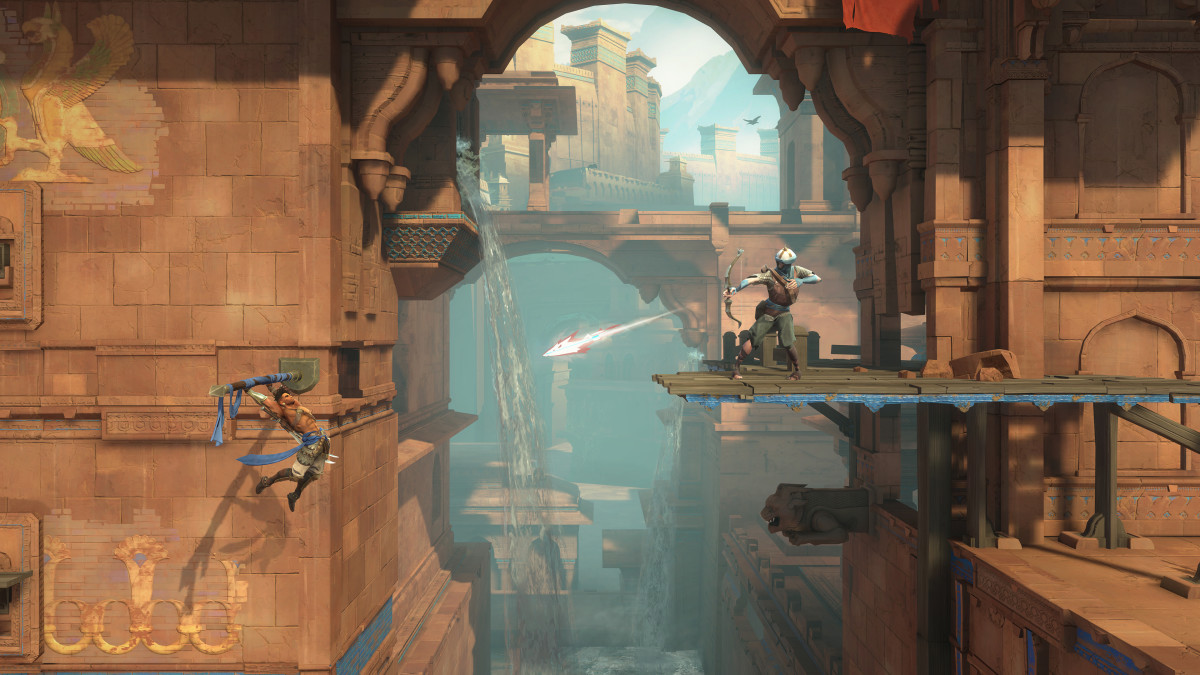Prince of Persia: The Lost Crown review – Taking the Prince back to his roots
We might not have the long-awaited Sands of Time remake, but we do have The Lost Crown. Returning to Prince of Persia’s roots, instead of a 3D action/adventure game that most people associate the Prince with these days, this is a 2D platformer with a metroidvania twist. If you are mature enough to remember the original games, you’ll know that death was awaiting around every corner. Once you had memorized the many hidden death traps that loomed over the experience, things became much easier.
The Lost Crown is just as brutal – in both the platforming sections and combat – without relying on cheap tricks and forcing you to memorize layouts. Luckily, Ubisoft has a huge number of accessibility options to help with this. If you love metroidvanias and platforming but don’t care for fights, you can adjust them to be trivial. On the other hand, if you just want to zoom to the next boss fight, there is an option to create a portal that will skip the platforming. Essentially, The Lost Crown is all about options, allowing the player to choose the experience they want.

It puts a lot of trust in the player and removes stress from the developers when it comes to game balance, but this isn’t necessarily a bad thing. Everyone is different, and this style of development allows The Lost Crown to cater to a wider audience.
I will happily admit that I used these options. I quickly found that the combat was not my style. All of the movement upgrades that you gain to assist with the increasing platforming challenges don’t seem to help too much when it comes to boss fights. Instead, there is an insistence on mastering the various parrying techniques. This works well at first, but soon bosses move lightning-fast, and only perform a parryable attack every four to five moves. You barely have the chance to land a hit, and, like the original games, it seems reliant on memorizing patterns. Soulslike fans might enjoy this, but those who are here to hop over spike pits can toggle a few options and breeze on over to the next bit of great level design instead.

Another issue with the boss fights is an overreliance on flashy animations that take away half your health. You can appreciate the cinematics, but you’re locked in once they start to play out, leaving you to sit back and watch your demise. It also breaks the flow of battle, which also ruins the tension. Some abilities you gain can have a wind-up of 0.5 a second or more. This doesn’t sound a lot, but it is when you see how fast these fights move. And you’ll be watching them a lot.
Platforming is where the game shines. The level design is incredible, striking the perfect balance of increasing complexity as you gain more powers. There is puzzle-solving involved in some sections, where you need to combine powers to move forward, and the map is littered with hidden areas containing brutal gauntlets.

One of the hardest of these was a long hall with no floor, only one resting point, and a split path. This took several attempts for me to complete and rewarded me with just two pieces of currency. Ultimately it was completely optional, but the currency isn’t the real reward. The true reward for these challenges is the joy of completing it. Players can skip these areas, but those who want a more difficult challenge are still served away from the main path.
Speaking of the main path, The Lost Crown’s story is fine. It serves the gameplay and explains why everything on Mount Qaf is so weird. However, it’s clear that it wants you to connect with the various characters, and it’s here where it misses the mark. Players don’t care about game characters because we’re told they have some long history together, we care because of the adventures we share. Characters here pop up infrequently for something dramatic, and as such, you don’t build any kind of bond with them. I cared more about making sure Hollow Knight’s whimpering Grubs made it home safely than I did for any of Sargon’s mates.

While it’s not perfect, I truly enjoyed my time with The Lost Crown. The platforming and world-building are top-tier, which makes up for many of its pitfalls (remember those in the original?). It matches up with the metroidvania greats: Hollow Knight, Axiom Verge, Symphony of the Night, and Ori and the Blind Forest in terms of the game’s map, hidden secrets, and platforming challenges. The Lost Crown gives metroidvania fans everything they crave – if that’s what you’re here for, you won’t be disappointed.
Score: 7/10
- Presentation: 7/10
- Story: 5/10
- Mechanics: 7/10
- World-building: 10/10
Version tested: Nintendo Switch
Prince of Persia: The Lost Crown technical performance
During combat and platforming sections, The Lost Crown runs perfectly. The frame rate is steady and smooth, and you shouldn’t encounter issues here. There are big problems when encountering cutscenes, however. One cutscene crashed the game four times in a row, and I had to try various methods to allow me to move forward. Another cutscene locked the camera, meaning I couldn’t leave the room. This also persisted over resets. Soft locks due to errors loading cutscenes were not uncommon, so it is important to save frequently. We also tested The Lost Crown on PS5 and PC and found that similar errors occurred.
